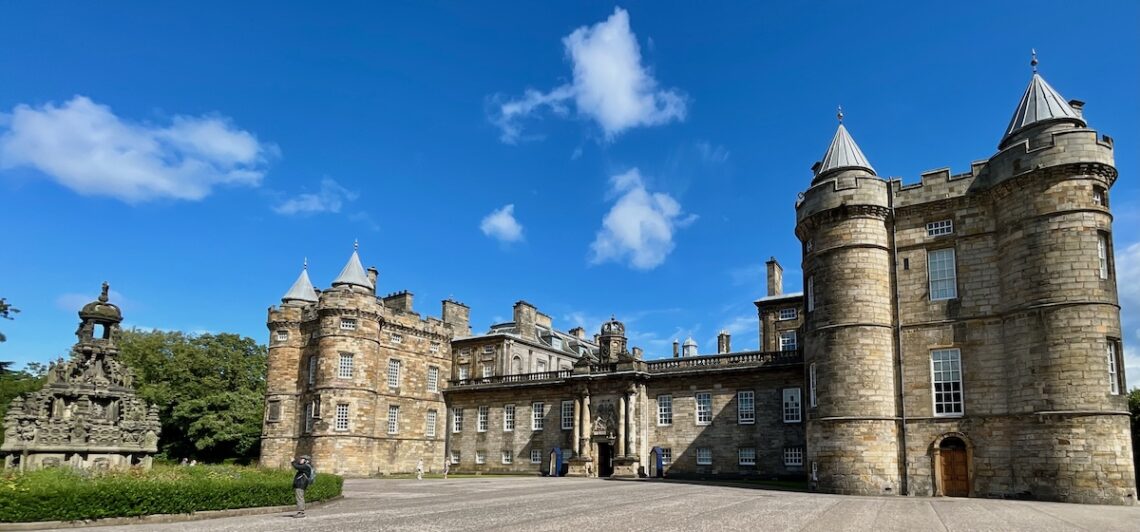
SCOTLAND: Castles, Carvers, and The Royal Mile
Excessive dancing? Can there be such a thing?
When Mary Queen of Scots returned to Edinburgh at the hopeful age of 23 she danced too much, according to party-pooper Edinburgh preacher John Knox. The last guy you ever want to invite to a party would be Knox, prominent Protestant Reformation leader, who replaced St. Giles Cathedral’s glowing rainbow-hued stained glass windows with plain clear glass. So much sin lurks in gorgeous glass, I suppose.
Stained glass picture stories served as the poor person’s Bible of medieval times, so who gets rid of beautiful windows that helped illiterate peasants learn Bible stories? A sourpuss, I’d say. John Knox stood out in a crowd of other sourpusses, schemers, power mongers, jealous cousins, and plotters who ruined Mary Queen of Scots’ dancing galas. All that ruining led to the tragic day she lay her long neck and both hands down upon a narrow chopping block. The executioner’s assistant ordered her to remove her hands from the scaffold, so they wouldn’t get chopped off too. Like it mattered.
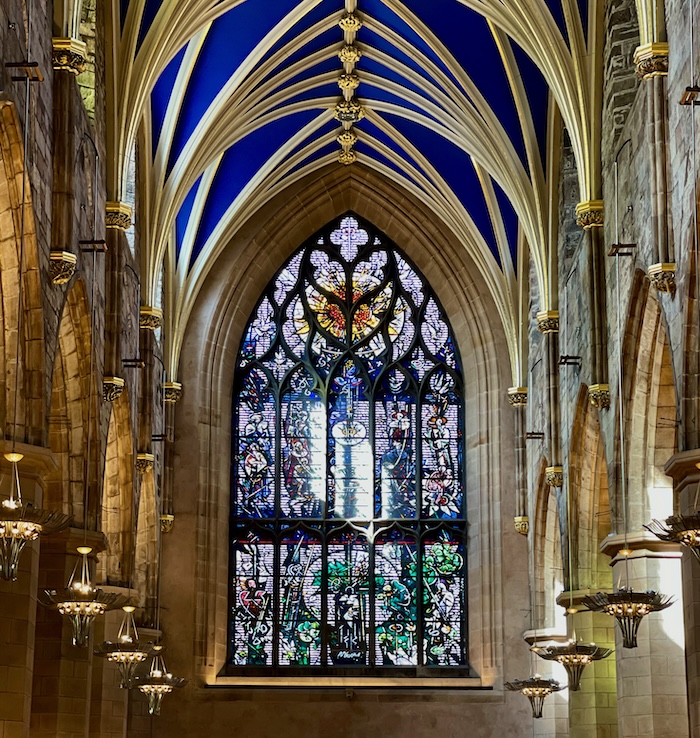
Mary died on her own terms, though – more on that later. When one considers the many forces out to destroy her, she partied on far longer than those of lesser mettle. Mary proved to be a smart, resourceful woman who schemed with the best of them, and I found myself rooting for her at every defeat. Now we need to watch all those Mary movies again – no wonder there are so many.
What a life. While she certainly messed up in the love department – what queen hasn’t? – she hung in there with great style until the very end, even stitching fun messages into her embroidery for her mean cousin Elizabeth. In a time when women weren’t supposed to do fun – medieval women bore multiple babies, died young, and served as bargaining chips on the international stage – Mary showed us how to live it up despite daunting odds. (Of course it helped to have oodles of servants who brought 23 main dinner dishes for you to choose from, I know, but still.)

We caught up with Mary on our way from Glasgow to Edinburgh to meet our tour group, and tried something new: Instead of wrangling luggage onto a train or bus, as our younger selves would do, we hired a private driver to deliver us to our Edinburgh hotel door. Even better; we made two tourist stops along the way, our first at Linlithgow Palace to visit the roofless ruin where Mary of Guise gave birth to Mary Queen of Scots in 1542.
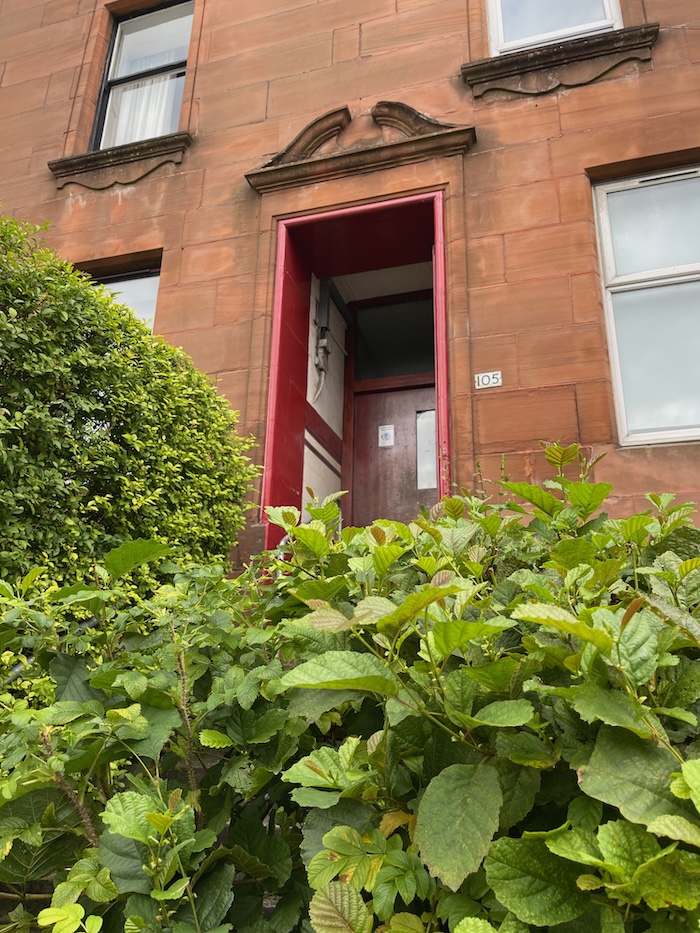

Our private driver Jameel’s services cost much more than a cheap train ride, but he made it so easy. We used an online service called Daytrip to reserve, and couldn’t be more pleased with Jameel’s chauffeuring. And Jameel knew where we were going, which we definitely did not.
Rumor has it that Mary of Guise haunts Linlithgow Palace to this day, so as we toured the castle I kept peeking in all the dark corners. So many shadowy corners, grey stones, and steps: 102 to the tippy top, in fact, and we climbed each one. From the ramparts we enjoyed expansive views over the surrounding area and Linlithgow Loch, on a gorgeous late summer day.
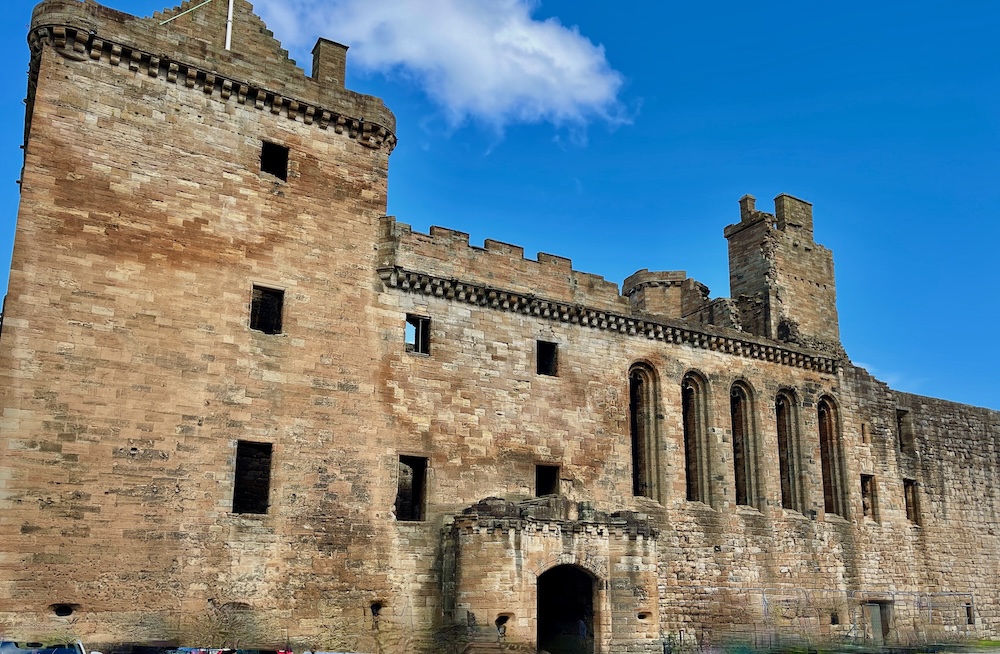
How did Mary of Guise react, on Day Six of little Mary’s life, when her husband King James V died of cholera here and made baby Mary the Queen? The elder Mary may have been relieved, considering the nine illegitimate children the King fathered, but who knows? Reports said that baby Mary cried through the anointing ceremony. What baby wouldn’t, especially if that baby knew her anointing meant every power hungry Earl and Duke in the kingdom would be plotting to use her or take her down?
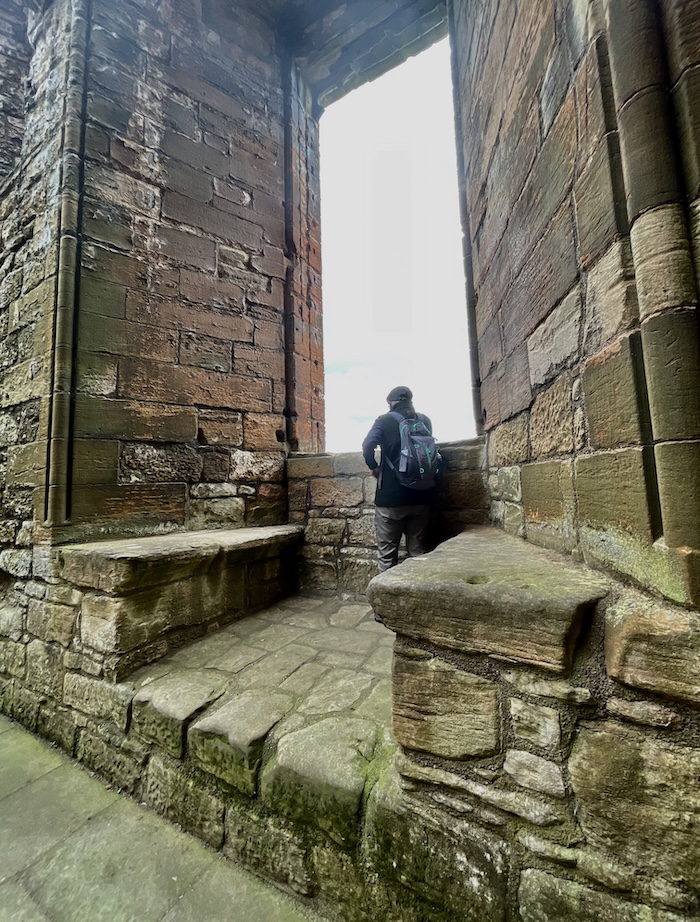

Mary of Guise knew, and that’s why she moved her baby queen to Sterling Castle soon after, for protection, a castle we’ll visit later in the trip. I did get a special thrill sitting on one of Linlithgow’s stone window sills in Mary’s chambers, where I liked to imagine the mother and child may have sat hundreds of years ago. As I sat, the ghost still didn’t show up despite my requests for a reveal, but ah well.
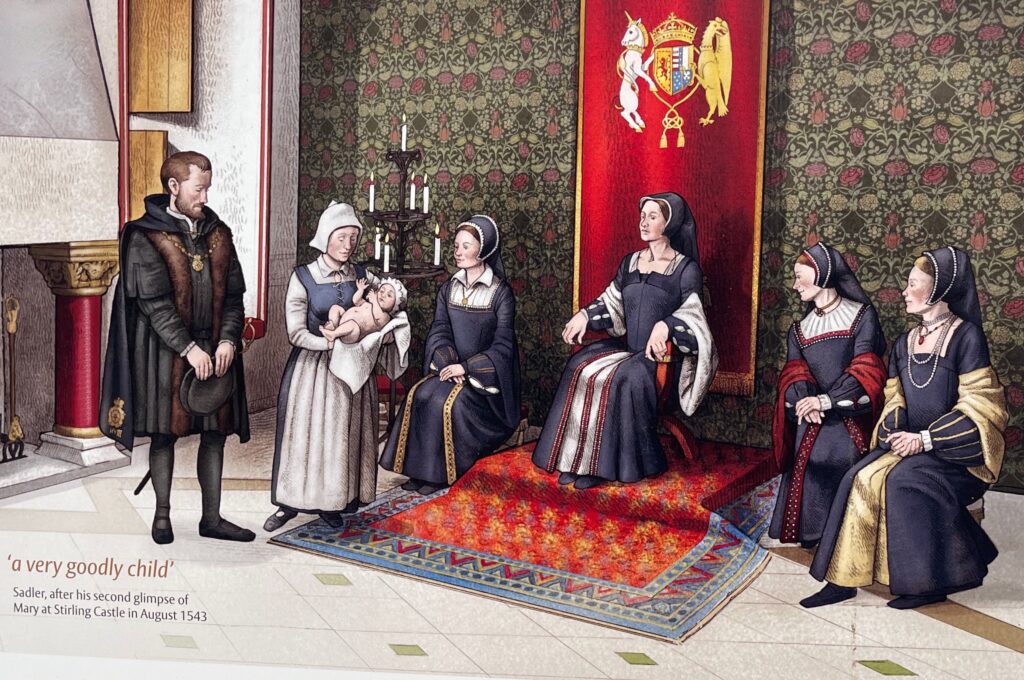
For Outlander fans out there, Linlithgow Palace also stands in for Wentworth Prison, where all sorts of bad things happened, but Linlithgow looked like a perfectly respectable medieval castle to us.

Baby Mary’s christening occurred at St. Michael’s Church, right next door to the Palace, where the church has held services since the 1100s. We chatted up two lovely parishioners who demonstrated the church’s motto: Be kind to strangers. And they were. They also invited us to attend services online, which we plan to do. I’m sure medieval worshipers would be flummoxed to know that, far in the future, people in Seattle like us might attend their worship service on an Ipad screen. Whoa.
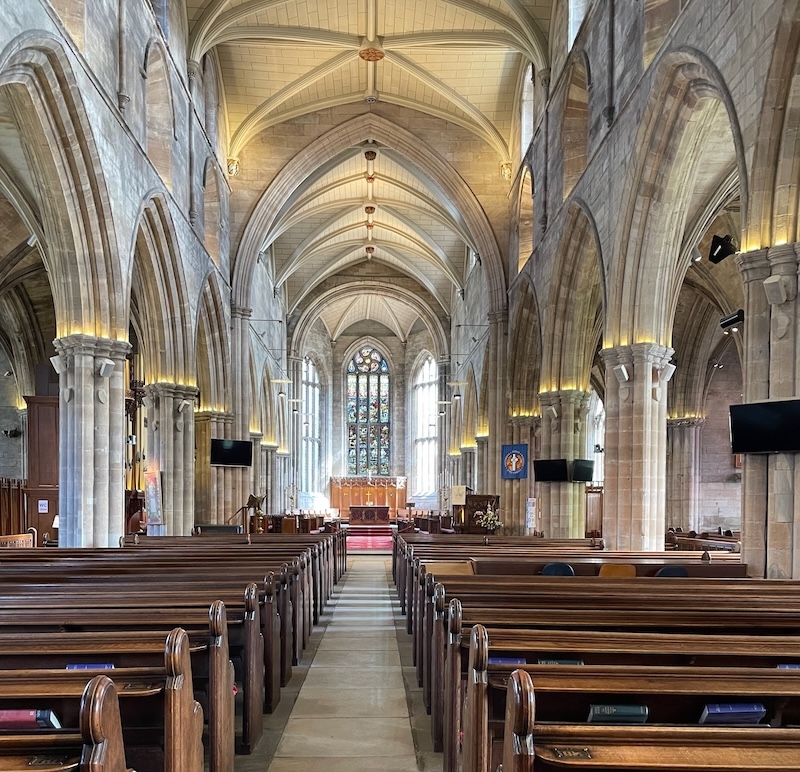
Our next stop didn’t involve Mary, but enough jealousy and mystery to keep things wildly interesting. Many know of the medieval Rosslyn Chapel from the 2003 hit novel, The Da Vinci Code, which created the myth that the Chapel holds powerful secrets. Like, Holy Grail secrets.
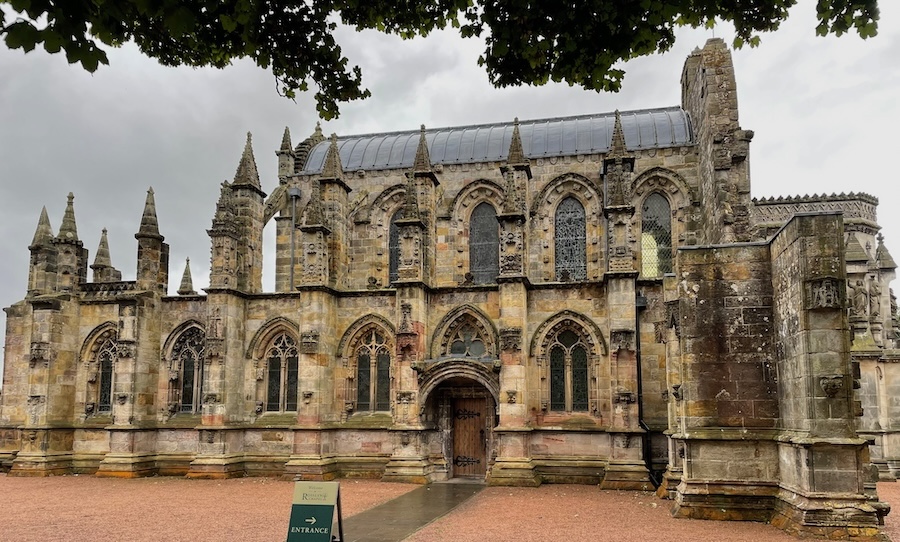
Nope. No Holy Grails secrets, unless they’re buried deep under the vaults where old bones have turned to dust. What the chapel did provide is a masterclass in carving. No picture-taking allowed inside the Chapel, but the crazy carvings made our tour more than worth it.
We marveled at water spout gargoyles; a Dance of Death creation with leering skeletons yanking desperate humans downward; 110 garden green men with vines wiggling out of their mouths; camels, corn (camels and corn in medieval Scotland?), aloe vera, and trillium plants; angels playing bagpipes, and so much more. Our heads turned every which way in the small space. Like no medieval church we’ve ever seen. The chapel’s carvers must have carved on steroids.
We stopped turning our heads, though, at the most impactful carving, the inscription, Death Renders All Equal.
That it does.
On to the jealousy pillar, whose official name is the Apprentice Pillar. A teacher murdered his apprentice because the youngster carved a spectacular pillar after the teacher said it couldn’t be done. So much for that. The teacher’s murderous rage resulted in his execution, as well as his face carved on the wall, perfectly positioned to forever gaze upon his student’s creation. Now that’s mean.
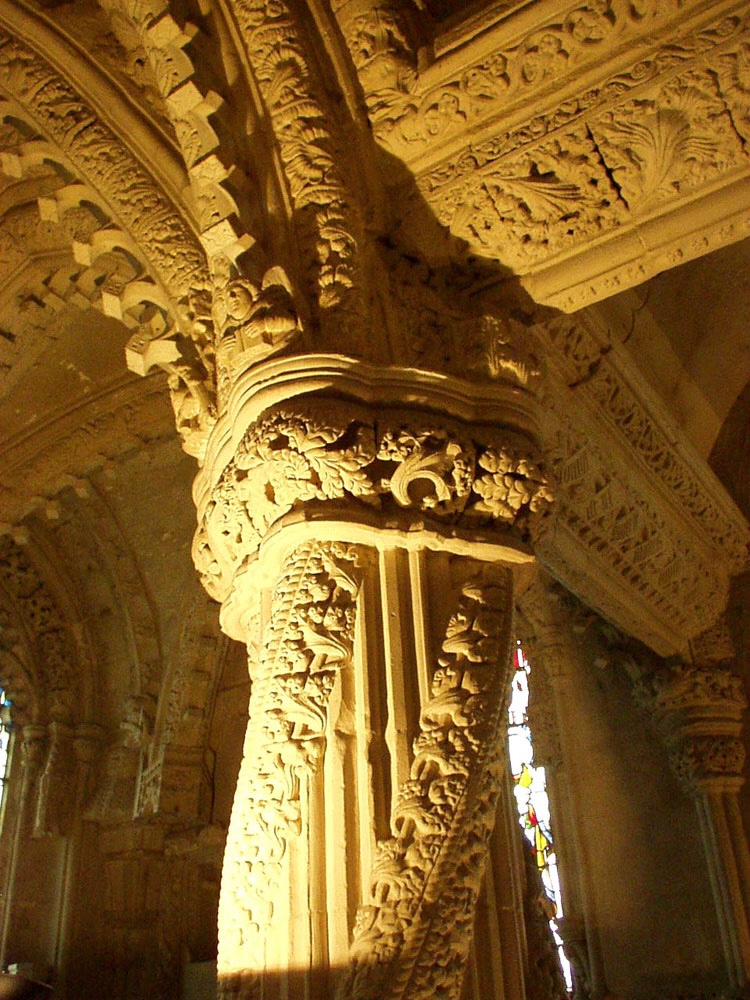
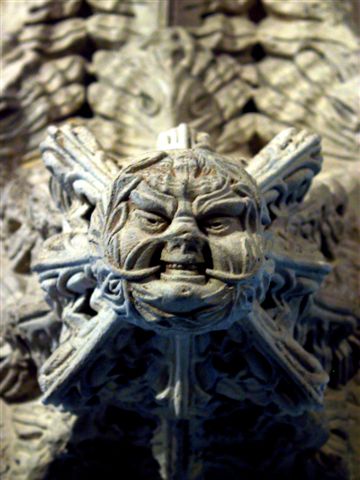
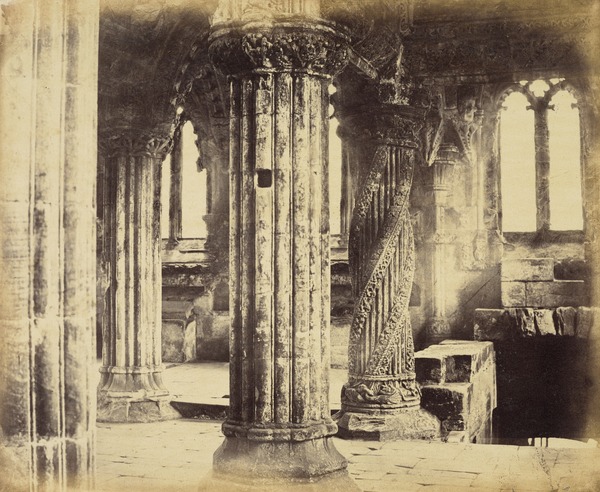
Then we travelled on to Edinburgh, where our lodging, Wilde Aparthotel, sat smack at the base of Edinburgh Castle. We opened the curtains of our room to stare straight up a sheer cliff, topped by castle ramparts. A perfect location for castle defense, but we didn’t see any boiling oil rolling down our way so we felt safe.
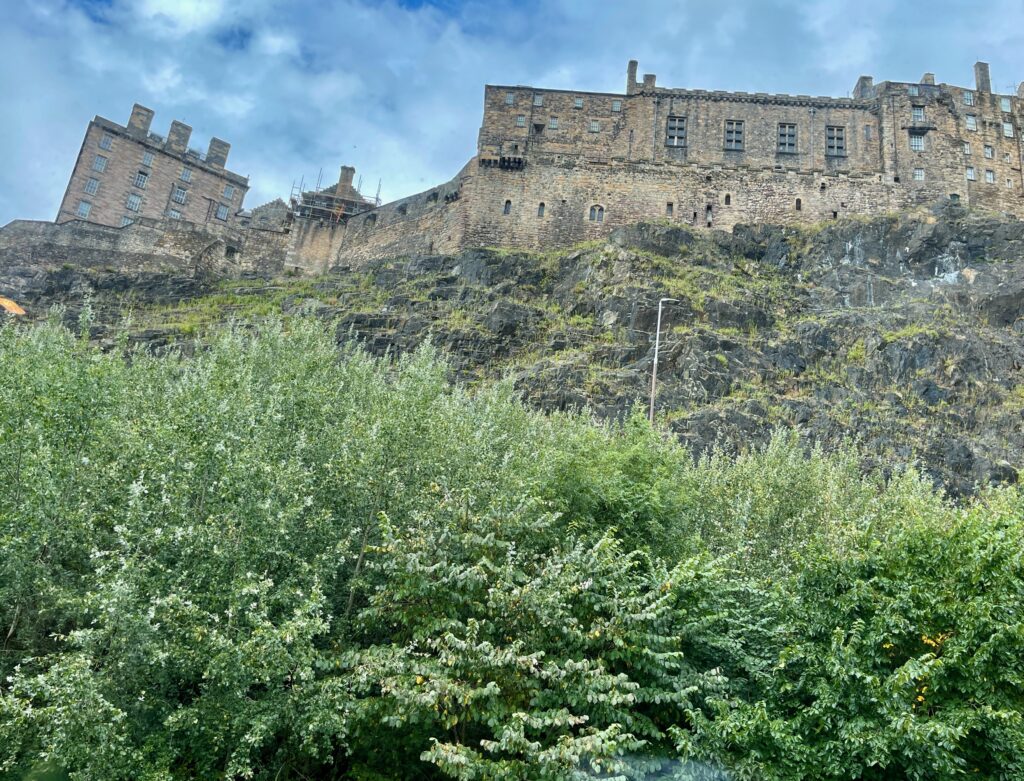
The Wilde’s location proved to be perfect for touring Edinburgh. It’s just around the corner from the Grassmarket, an area filled with pubs and shops, and it took just a few more steps to reach the Castle entrance and the Royal Mile.
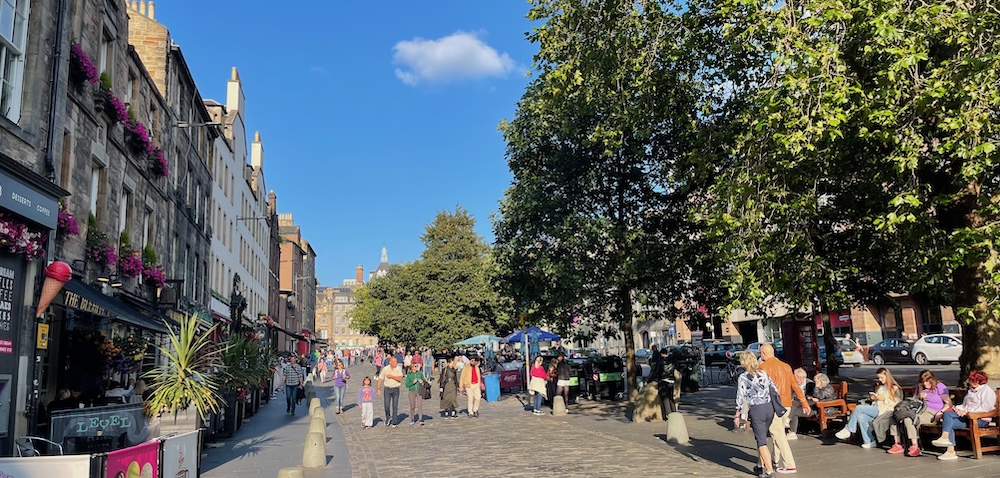
In Grassmarket watch out for the serial killers, though, the ones who used to troll the pub we ate in, The White Hart Inn, for victims in 1827-28. Two murderers sold the cadavers for cash to a medical doctor who performed dissections. There’s even a famous nursery rhyme to celebrate the situation:
Up the close and down the stair,
In the house with Burke and Hare,
Burke’s the Butcher, Hare’s the thief,
Knox, the boy who buys the beef.
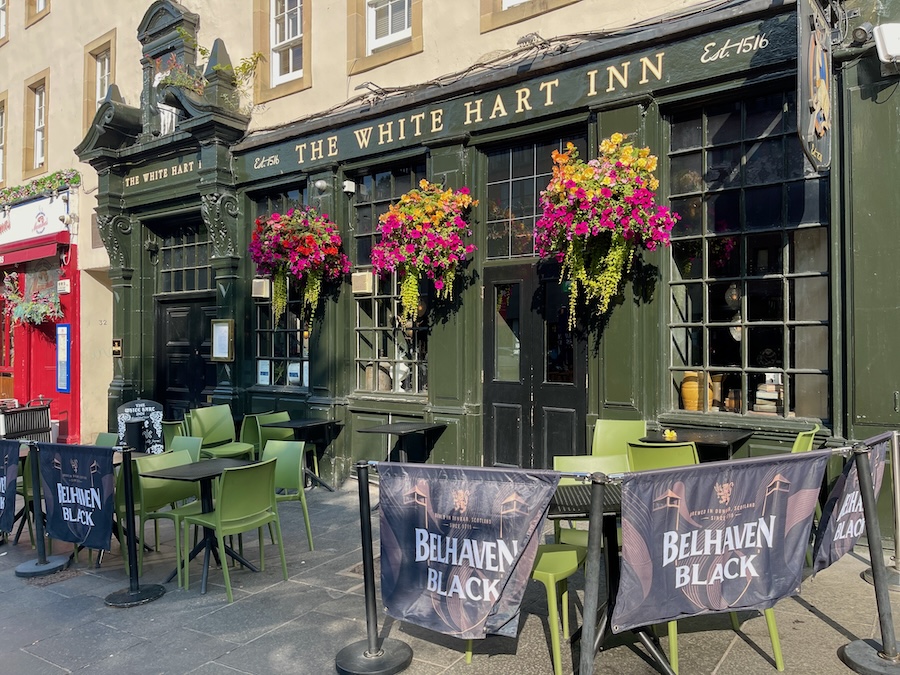
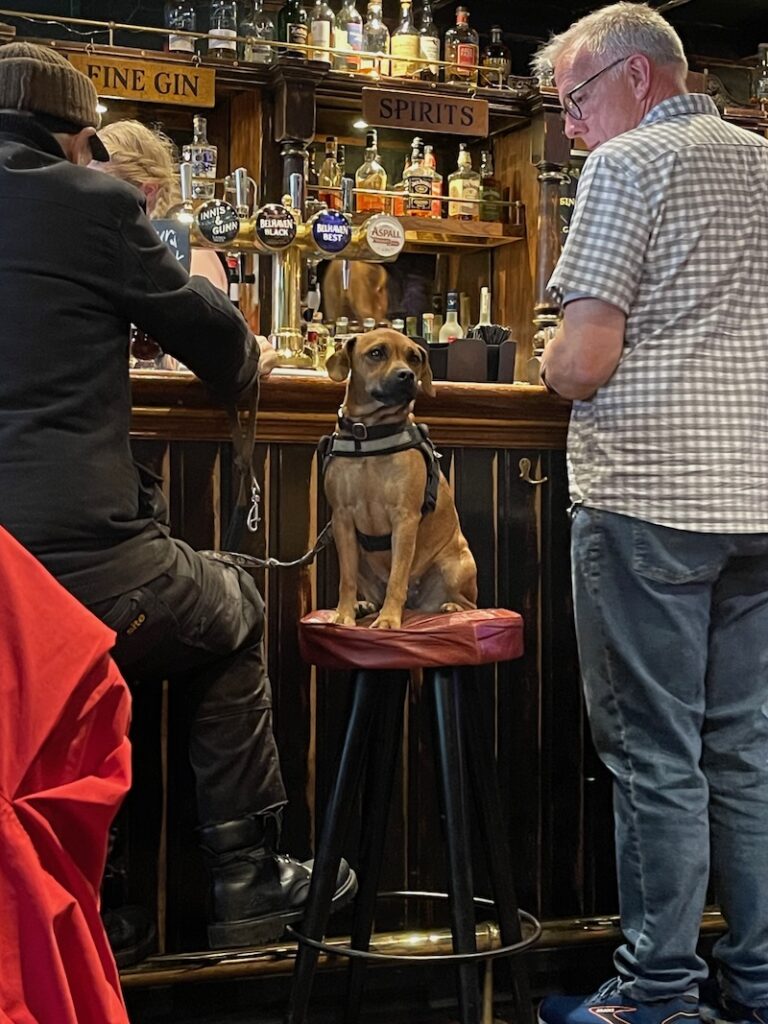
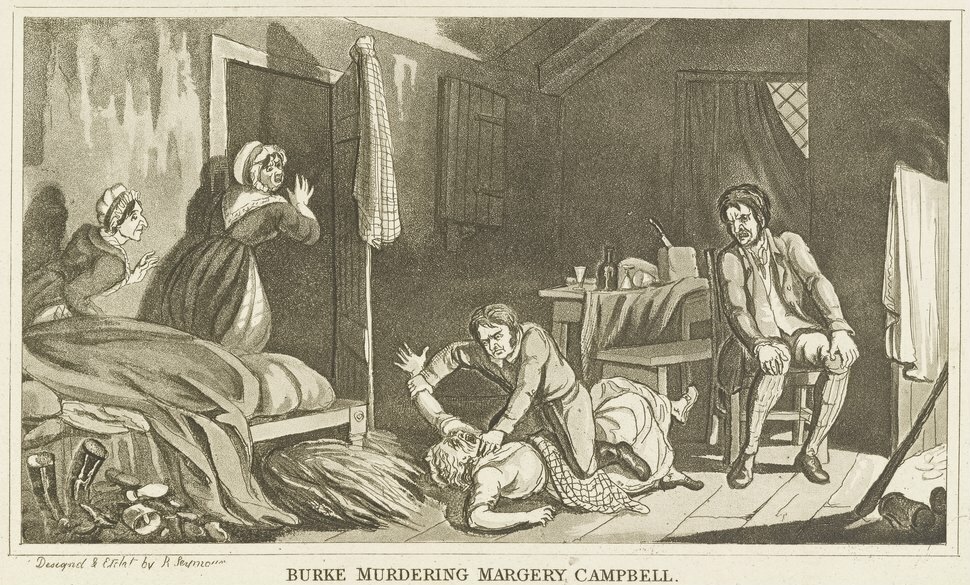
And Grassmarket gets worse, historically. Officials staged hangings here, as locals capitalized on hanging spectacles by renting out window space for views of the drops. Yep, the drops, as in hanging drops. Today you can hoist a pint in The Last Drop Pub, whose clever name slyly winks at the gruesome reality of days gone by. We ignored the history and dined at outdoor tables in the afternoon sunshine. By this time we’d picked up our travel mate, Pat, and she didn’t care about the history either. Just the pizza, which was delicious.
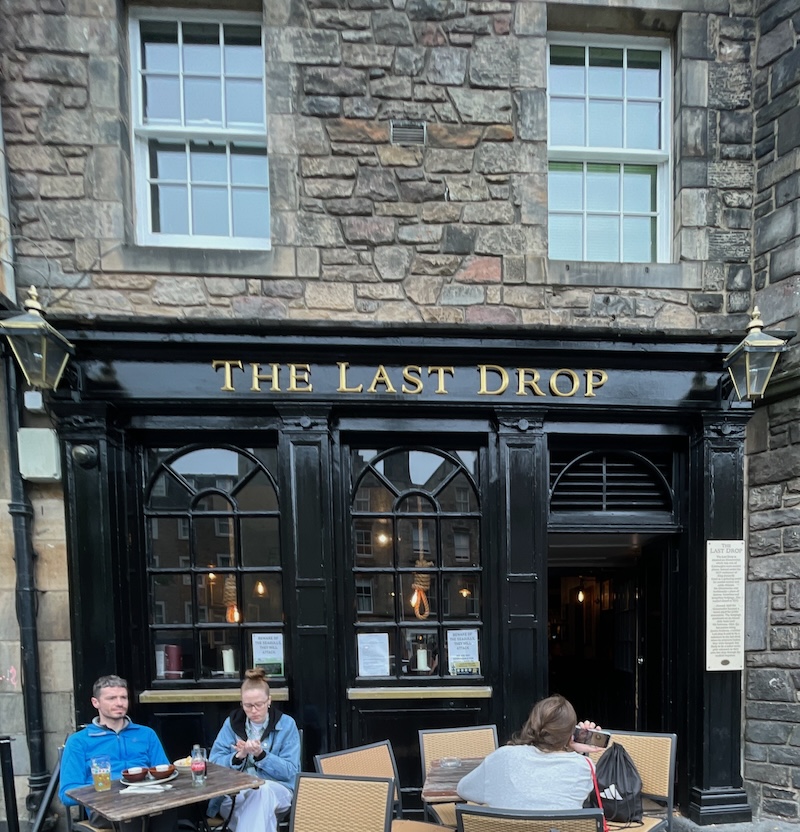
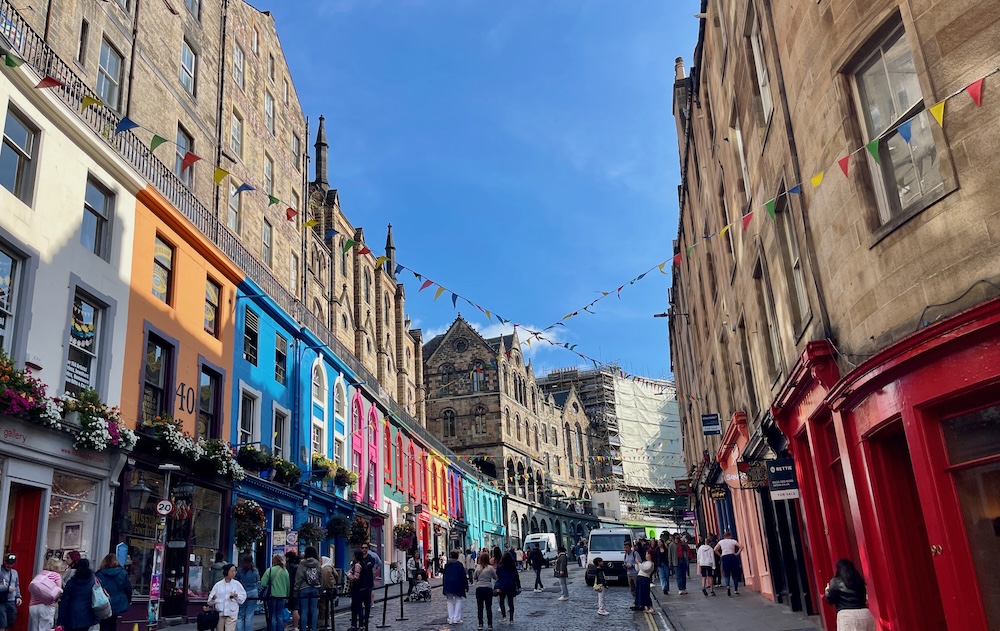
So we began to understand why Scottish writer Hugh MacDiarmid wrote that “Edinburgh is a mad god’s dream”. The next day, we headed off to The Royal Mile and promptly lost ourselves down one of Edinburgh’s deep-shadowed narrow alleyways, called closes, as we hunted for the Writer’s Museum. So easy to imagine ghosts, accused witches, and writers wandering down these surprising medieval entrances and exits to Edinburgh’s grandest street.

We never did find the Writer’s Museum, even after a second try, so to say Edinburgh’s closes are twisted and confusing, well yes they are. No wonder so many ghost and horror stories – not to mention the Harry Potter novels – have been inspired by this unique locale.
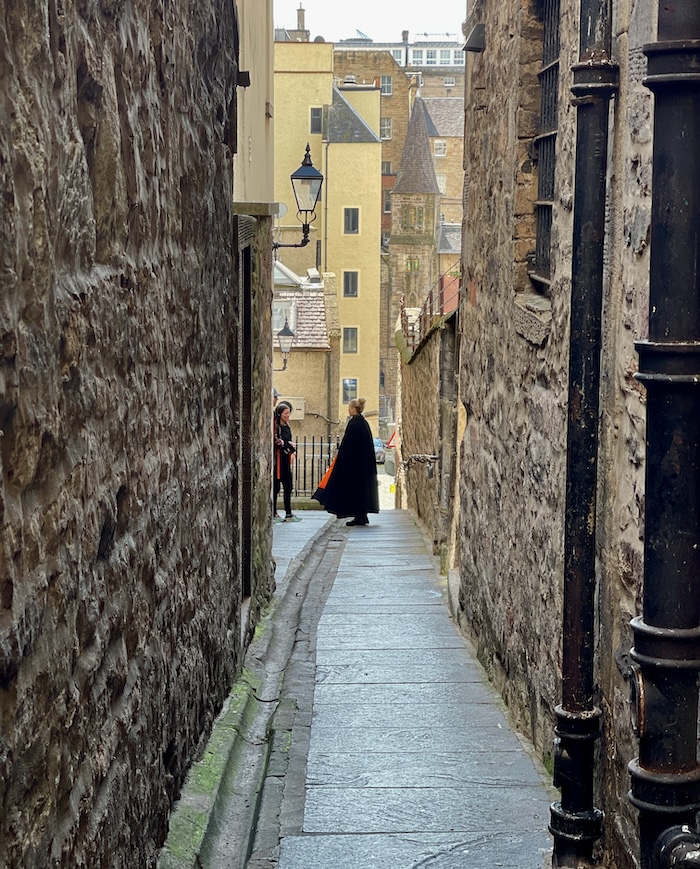
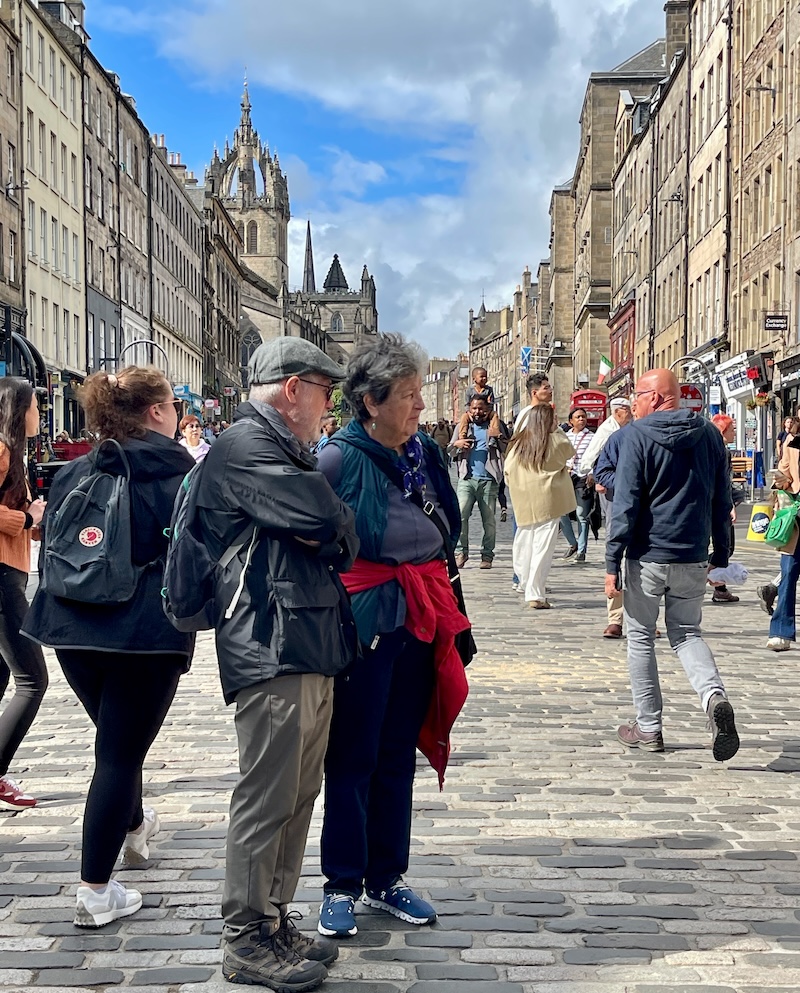
We strolled down The Royal Mile, stopping at St. Giles Cathedral, where, after her recent death at Balmoral Castle, Queen Elizabeth II lay in state. Princes Harry and William walked behind her casket up the Royal Mile to the Cathedral from HolyroodHouse Palace, another of Mary Queen of Scots’ homes, where we checked in next. (King Charles and his entourage visit Holyrood in the summer, but spend most of August at Balmoral).
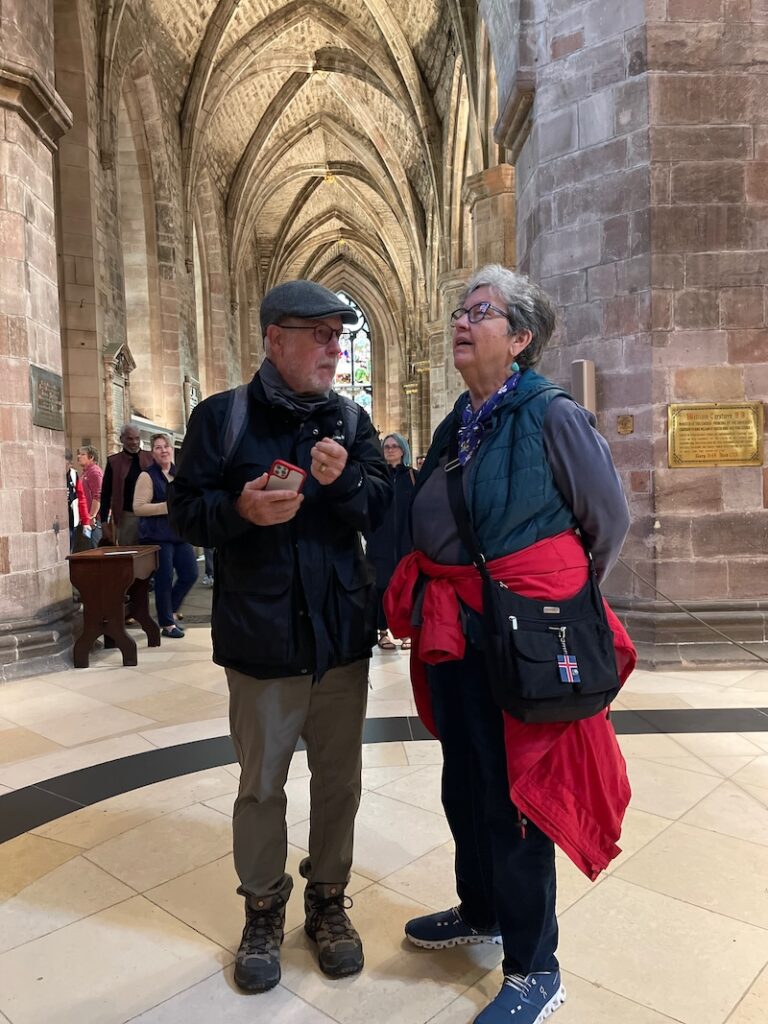
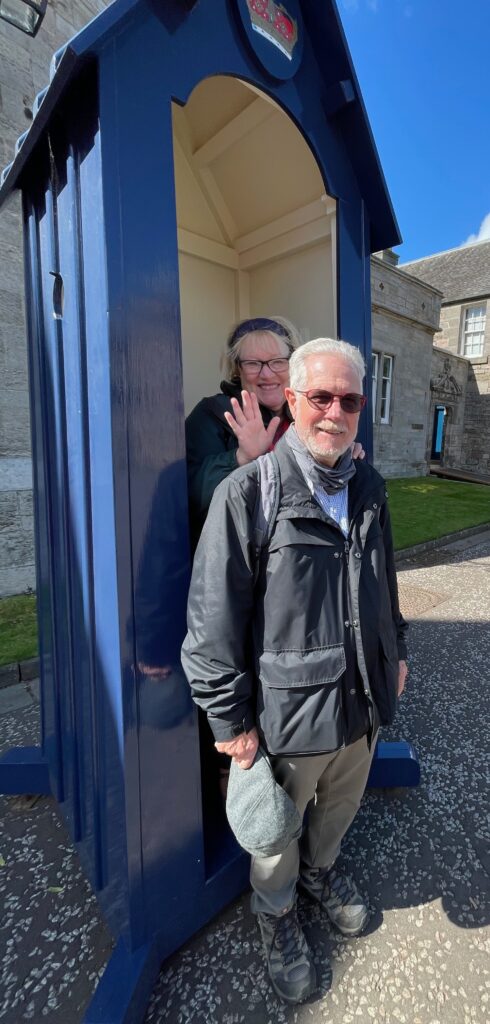
Many dramatic events of Mary’s life occurred at Holyrood, including the gruesome murder in 1566 of her secretary, David Rizzo, right outside her chambers where bloodstains on the floor still mark the spot where he died. Mary’s jealous husband, Lord Darnley, burst in with other conspirators as Rizzo hid behind the heavily pregnant Mary and one of the rebels pointed a gun at her belly. The rebels seized the secretary and dragged him to an anteroom, where they stabbed him 56 times and threw his body down the stairs. (Besides being smart and resourceful, Mary was tough. Gun-in-the-belly, survive-a-stabbing tough.)
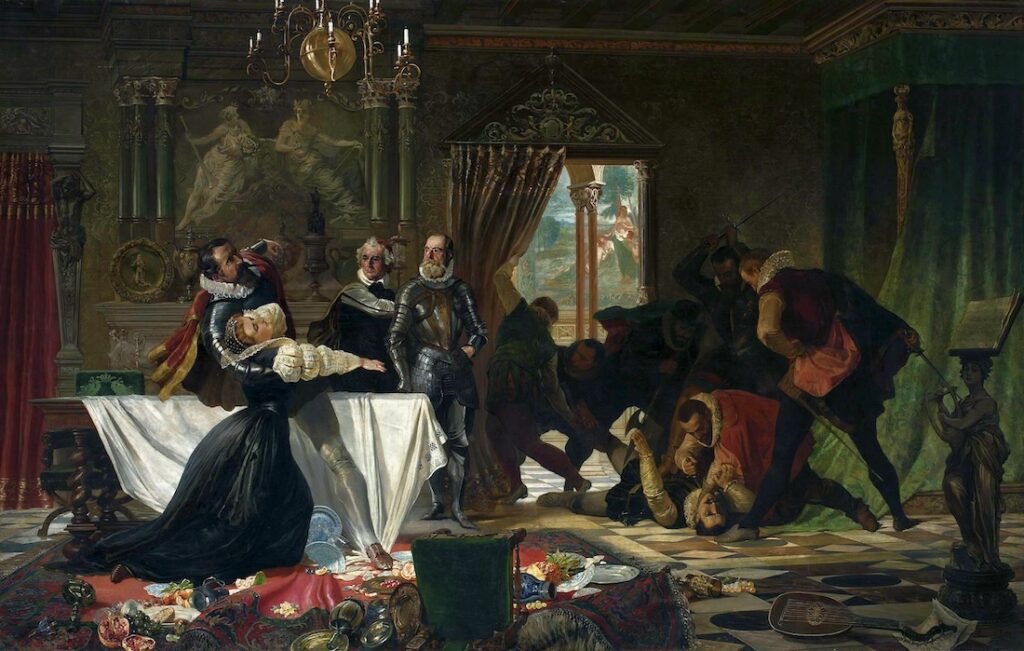
We hiked up those steep narrow stone stairs to her chambers to view the scene of the crime, and sure enough there were Rizzo’s bloodstains, still evident after several centuries. Rumor has it that over the years staff ‘refreshed’ the stains with tomato juice to ramp up the drama, and their plan seems to have worked, since we all crowded close to see the bloodstains. (Humans are such ghouls sometimes, aren’t we?)
Somehow our tough girl Mary managed one of her famous escapes the next day, and gave birth to her son James VI, later James I of England, in Edinburgh Castle a few months later. We’ll be visiting Edinburgh Castle soon, including the room where Mary gave birth to her son James – one of those kids who never calls on Mom’s birthday. (She deserved so much better, I say. He didn’t save her from execution, either.)
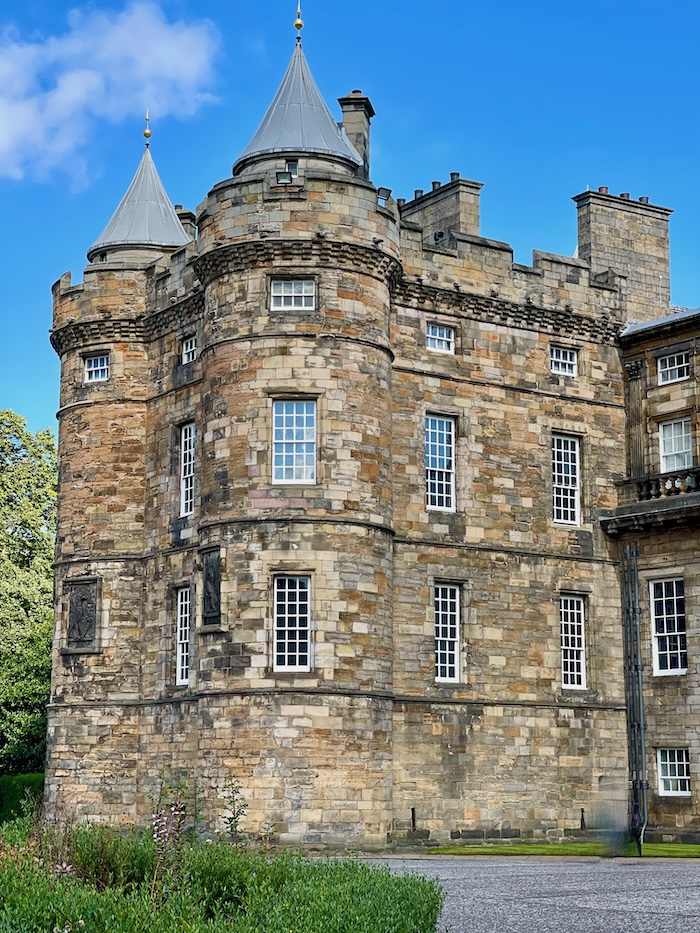
Lord Darnley ended up murdered not long after Rizzo’s death, and no one ever proved definitively that Mary had a hand in his end. Did she have him killed, or didn’t she? No one knows, but when she eventually fled Scotland, abdicating in favor of her son, she threw herself upon the mercy of her English cousin Elizabeth I, but trusting her cousin was a mistake. Elizabeth kept Mary in captivity for 18 years, before ordering her execution for plots against the Queen. (So sure, Mary was probably involved in that, but everyone plotted against the Queen. That was just a thing back then.)

The way Mary died, though, at age 44? Mary thought the whole thing through, tossing off her cloak to reveal a crimson execution dress, the Catholic color of martyrdom. She stood up for her Catholic faith until the very end. Take that, John Knox.
When the executioner held up her severed head and announced, ‘God Save the Queen’ Mary’s wig came off in his hand, and witnesses reported that her lips continued to pray long after her head tumbled to the stones. Then, as if that wasn’t enough to make the event unforgettable for centuries, her small terrier emerged from underneath her crimson skirts where he had been hiding (she loved her pets).
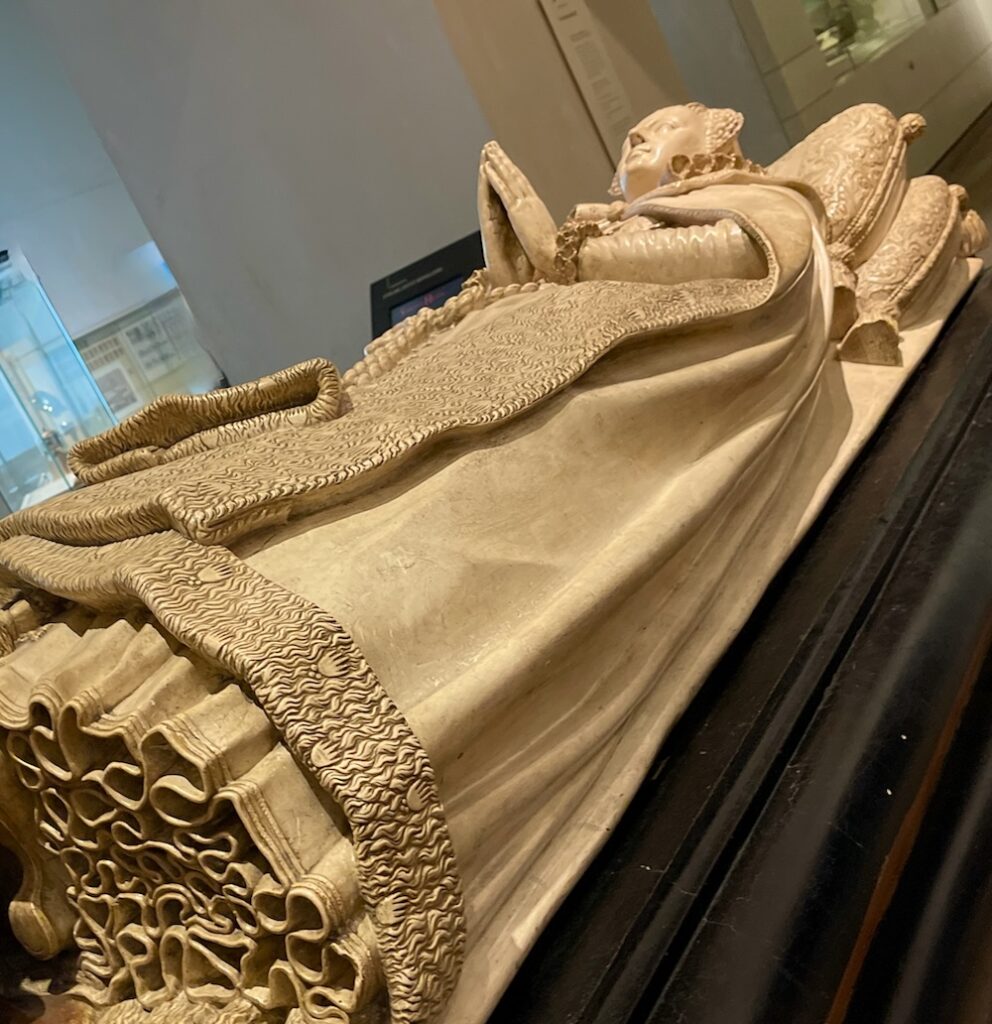
So in a morbid way, Mary had the last laugh. She definitely had the better tomb. Her son James I, who carelessly neglected his mother during her lifetime, finally constructed a fitting resting place for Mary, and moved her remains to London’s Westminster Abby.
Mary’s tomb now towers over Elizabeth’s, in the small chapel where both are interred, together forever. Or at least until some other son or daughter decides to move the bones around.
We found notable historical figures, writers, philosophers, and more around every turn on Auld Reekie’s* Royal Mile (*Edinburgh’s historical nickname, because of its smoky, stinking, overcrowded past). After what we’ve learned so far, we agree with what writer/film producer David MacKenzie said about this fascinating city: “Edinburgh is a sort of gothic fairytale city, and it can be a gothic horror city as well.” Yep.

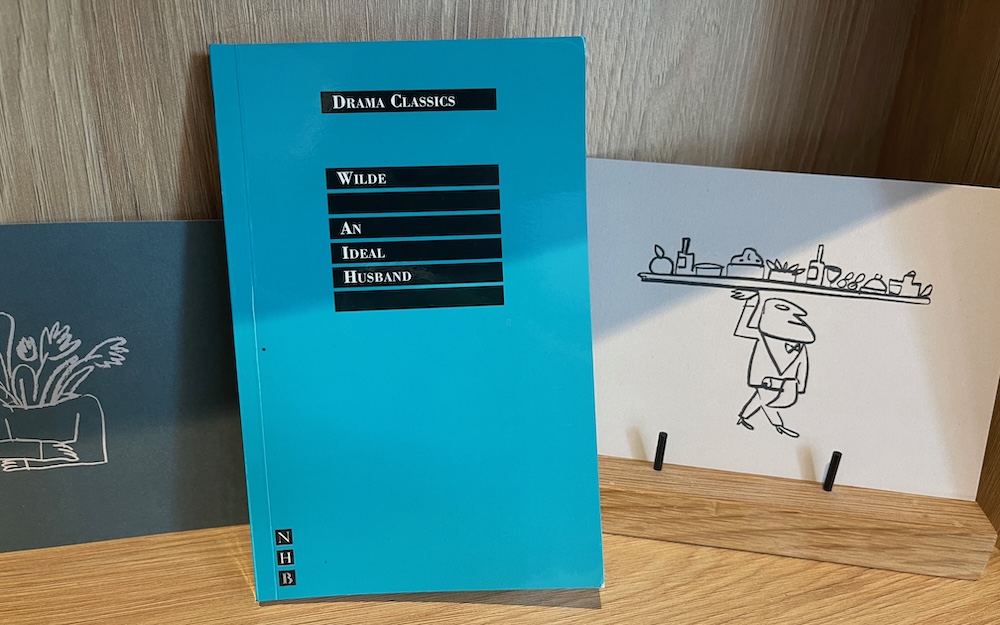
More royal doings coming up, including a visit to Edinburgh Castle, and a journey out to Leith to board the royal yacht Britannia. Word of advice: Do NOT honeymoon on that ship. (Princesses Margaret, Anne, and Diana all boarded the ship for honeymoon trips, and their marriages went under soon after.)
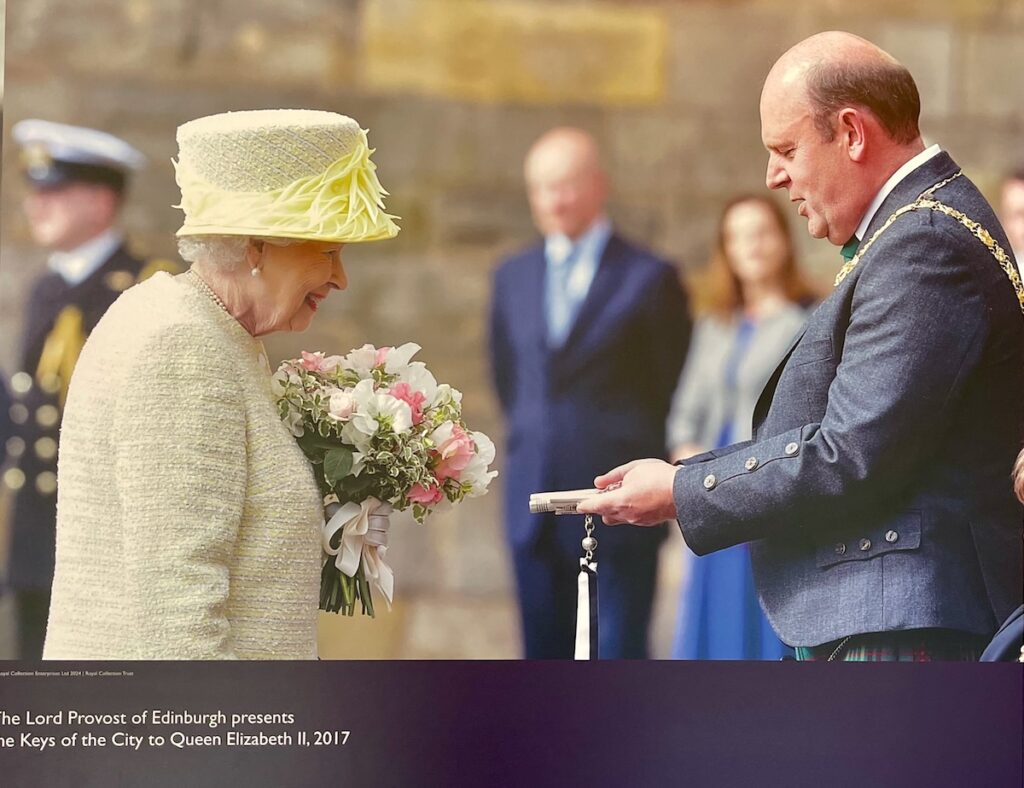
I’m going slowly on write-ups since we’re still on the road, but there will be plenty more coming up soon. One of the main reasons I write up our trips has to do with how it helps me remember everything very clearly, and if I write it up, I never forget. So far this has been one of the most memorable trips in a long time so I have plenty to write up!
Thanks, everyone, for following along.


